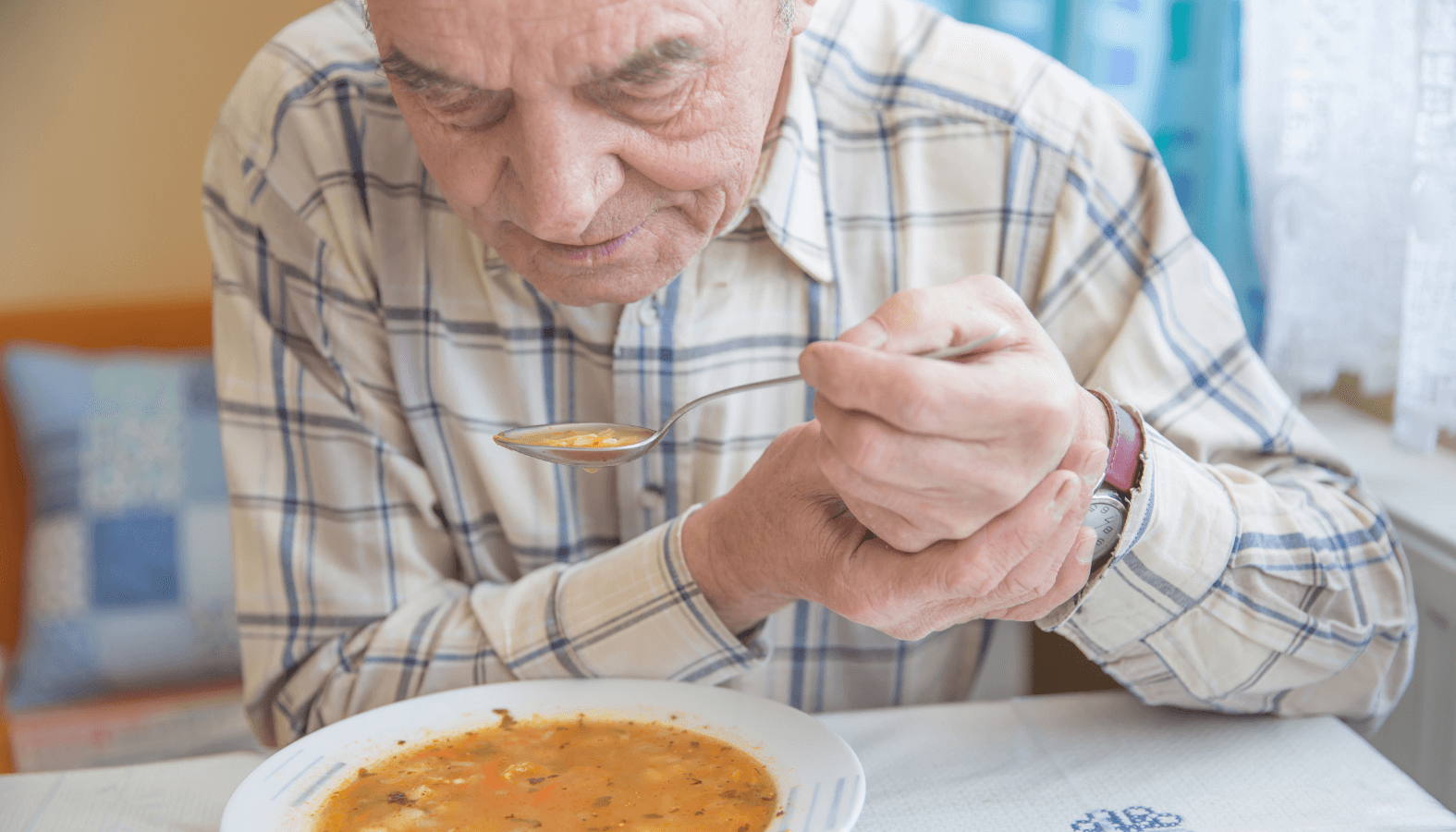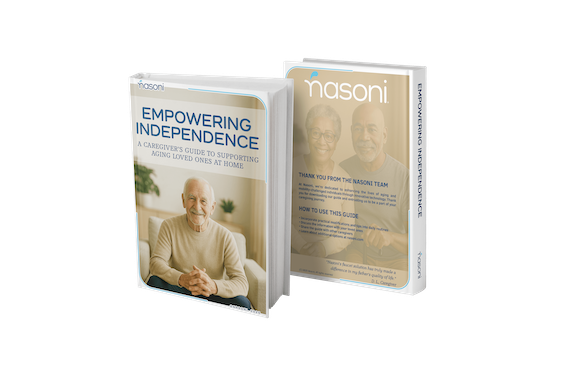Nasoni Bathroom Fountain Faucets Can Aid Patients With Chronic Health Problems

Dr. Anique Ali

Patients battling chronic health conditions not only suffer from physical distress but also go through psychological turmoil associated with the disease. Such individuals require special medical attention, family support, and any form of assistive care that can ease their suffering in this time of need. One such means of assistive care is the employment of an assistive device. Any external device designed, made, or adapted to aid a person in performing a particular task is known as an assistive device. Patients with disabilities or physical limitations depend on such assistive devices to enable them to carry out daily activities.
One such device in the discussion today is the Nasoni Fountain Faucet that is specifically architected to aid patients with chronic health conditions in maintaining orofacial hygiene independently, along with easy access to drinking water from the same faucet. But before, a few medical conditions that can cause difficulty in maintaining hygiene routine independently, particularly ones involving the use of a sink, are discussed. All the below-mentioned ailments are associated with a decreased quality of life due to functional limitations posed by them.
MEDICAL CONDITIONS THAT LIMIT RANGE OF MOTION
Elderly
The life expectancy in the United States of America was recently estimated to be 78.87 years (2019), which is around 25 years greater than the previous century (1919). This increase in life expectancy is due to advancements in the field of medicine and health care availability. However, with advancing technology, the incidence of comorbidities and chronic disorders has also substantially risen. It has led to a nationwide increase in expenditure on assistive care and nursing facilities for the elderly. Accordingly, devices and utensils that can aid this population to perform activities of daily living independently have also shown to be worthy investments. Conditions that hinder and alter the daily routine activities in the elderly include osteoporosis, osteoarthritis, chronic fatigue, and pain syndromes secondary to chronic illnesses.

Arthritis
Arthritis is the inflammation of one or more joints, causing tenderness and swelling in the affected joint. The etiology behind arthritis can be explained as the degeneration of the joint occurring secondary to aging, for example, osteoarthritis, autoimmune destruction, for example, Rheumatoid arthritis, or infection, for instance, septic arthritis, etc. The subsequent swelling and tenderness around the joint space lead to a restriction in the range of motion, limiting the patient's mobility. Specifically, arthritis of the cervical spine, which is the segment of the spine in the neck, also known as Cervical spondylosis, is a relatively common entity. Its most common presenting features include chronic pain and stiffness that worsens with bending of the neck, involuntary neck muscle spasm that causes pain and loss of movement, and numbness, and weakness in the arms, hands, and fingers.
The condition is well known to significantly affect patients' quality of life, with a recent piece of literature reporting greater than one-third of affected individuals to have anxious or depressed moods secondary to their decreased mobility.

Vertigo
Vertigo is a spell of dizziness often accompanied by nausea stimulated due to specific triggers. Vertigo can manifest as a symptom of pathologies of the inner ear, sensory nerves, and the brain. One of the variants of vertigo is known as the benign paroxysmal positional vertigo (BPPV), where certain head movements can trigger spells of dizziness. Patients experiencing vertigo are at high risk of falls and associated injuries. The impending anxiety of a vertigo attack in such patients may impair their performance of daily, social, and professional activities.

Spinal disk herniation
Spinal disc herniation is a painful, debilitating condition that occurs due to the protrusion of cartilage present between the vertebrae (intervertebral disc), secondary to excessive strain or trauma to the spine. It can also occur due to degenerative bone diseases such as osteoarthritis of the spine in the elderly population. The herniated disc compresses the nerves originating from the spinal cord, causing symptoms of pain and numbness in the affected regions. These symptoms aggravate with movement, such as bending forwards, coughing, sitting, etc., and are often relieved by resting the spine in a straight position. Thus, the affected individual avoids activities that require bending the spine forward, which in turn restricts their functional capabilities.

Scoliosis
Scoliosis is the abnormal sideways curvature of the spine that is often identified during the developmental growth stage just before puberty but can also occur in the adult population. A survey estimation revealed that up to two to three percent of Americans (that is six to nine million citizens) suffer from this disabling condition. Symptoms of scoliosis can range from a purely cosmetic deformity to mild discomfort to severe life-threatening breathing disruptions. The majority of the patients experience similar complaints as disc herniation and have limited functional activity. Patients also experience extreme discomfort while bending the abnormally curved spine forward that results in pain, stiffness, numbness, cramping, and fatigue.

Dystonia
Dystonia is a complex neurological movement disorder that can occur secondary to injury, infection, heavy metal poisoning, certain drugs and stroke etc. It is characterized with often painful, slow, repetitive movements (twitching) and abnormal posture due to involuntary muscular contraction. The uncontrolled limb movement renders a patient dependent on the need of an assistant to even go about the activities of everyday living. Several studies report the quality of life in patients with dystonia to be severely compromised with high prevalence of depression, low self-esteem and acceptance of the illness in this population.
Upper limb fractures and amputations
Fractures of the upper extremity are relatively common in young males with a high incidence of around 67.6 fractures per 10,000 persons/yearly in the United States alone. It is due to the high association of road traffic accidents (RTA) and sports injuries in this population. Similarly, trauma also accounts for the majority of upper limb amputations carried out in the hospital settings. Both cast healing fractures and amputated upper limb create significant hindrance for the affected individual to maintain oro-facial hygiene. Difficulties include washing the face with one hand and cupping water in hand for rinsing the mouth after brushing, etc.

Parkinson's disease
Parkinson’s is a progressive neurodegenerative disorder that predominantly targets the neurotransmitters related to movement. Most commonly seen in patients in late adulthood or elderly, this condition severely compromises the standard of living in the affected individuals. The patients experience resting tremors of the hands, arms, legs, jaw, or head, along with stiffness of the limbs and trunk. Another classic feature of the disease is bradykinesia, or the slowness of movement that makes executing tasks of everyday living difficult. The patients are also highly susceptible to fall, due to the impaired balance and coordination. In conclusion, Parkinson's disease is challenging to live with, and the affected gradually robbed off their independent social and personal living.

Huntington's disease
Huntington is an inherited disease of the central nervous system that causes early onset of nerve degeneration in the central nervous system. It is, unfortunately, an incurable disease that progressively deteriorates a person's physical and mental capabilities to function independently. The most commonly observed symptoms in such patients is the development of involuntary jerking or twitching movements of the limbs, known as chorea. The loss of motor control leads to an individual being dependent on others to care for their basic needs, such as maintaining personal hygiene, grooming, and feeding, etc.

Cerebellar diseases
Cerebellum, Latin for the little brain, is a part of the brain that is responsible for coordinating voluntary movements including, skilled motor functions, balance, and posture. Thus, patients suffering from cerebellar disease face difficulty in performing coordinated hand movements and often are unable to reach out to the intended objects with extended hands. Other functional limitation symptoms are the intentional tremors that occur with hand movements and stiff muscle tone that exhibits resistance in motion. As the patients are unable to perform simple activities of daily life that require smooth hand functioning, the quality of life in such patients is severely compromised.
Congestive heart failure
CHF is a chronic progressive disease that severely affects the contractile property of the heart. Conditions that cause damage to the heart muscles are likely to give rise to CHF. In CHF, the heart is unable to adequately pump blood resulting in symptoms such as shortness of breath, generalized weakness, fatigue, and fluid accumulation in legs, ankles, and feet. According to recent literature, a new symptom of heart failure has been identified, called the Flexo-dyspnea or simply bendopnea. Bendopnea is the shortness of breath that immediately occurs within 30 seconds after bending forward. The prevalence of bendopnea in patients with early onset of heart failure (HF) was reported to be 28%, which subsequently increases to 48.8% in patients with decompensated HF. The phenomena occur secondary to the sudden increase in the abdominal pressure due to forward bending that causes a high circulatory return to the compromised heart. As the heart is already frail in CHF, it is unable to adequately pump the increased blood return forward, resulting in classic episodes of shortness of breath. The symptom becomes apparent when a patient bends down to pick an object off the ground or when bending over a sink to wash hands or drink water. The discomfort caused by the episode gives rise to avoidance behavior and distress in such patients to perform activities of daily routine.

How can we help?
Patients suffering from the aforementioned medical conditions require targeted medical help and professional care. However, efforts can also be made outside the medical field to alleviate their complaints. Nasoni is trying to play a part to facilitate such individuals in improving their quality of life to its maximum limit. Nasoni's product, the Nasoni fountain faucet, is one such initiative thoughtfully designed to ease difficulties faced by these patients while maintaining personal hygiene. This two in one solution addresses the complaints of difficulty in using a sink faucet and drinking water from the tap in such patients.
Nasoni fountain faucet
The Nasoni fountain faucet is more than a sturdy piece of brass for aesthetics in a restroom. It is an assistive device that tackles the complaints of pain and discomfort experienced on bending forward when using the sink. Although the Nasoni fountain faucet caters to all, it can specifically improve the quality of life in the patient suffering from certain medical conditions and the elderly population.
The fountain jet faucet not only aids in comfortably carrying out face and hand hygiene, such as brushing teeth, rinsing hands, and face but also allows drinking water without the need to bend at awkward angles. Patients with chronic back pain and with other postural problems, as previously discussed can thus, effectively use the sink without further exacerbating their pain.
On the other hand, patients with weakness of the handgrip, such as patients with stroke, muscular atrophy, unilateral upper limb amputation or fractures, etc., face difficulty in maintaining a hand cupping posture to collect water, to either rinse face or drink. For such a patient, a fountain faucet can bring immense convenience and comfort by replacing the need for hand strength and coordinated movement with a simple switch to access running water.
Patients with Parkinson's disease also exhibit signs of continuous tremors and bradykinesia that causes sufficient hindrance when performing even simple tasks. Similarly, patients with cerebellar diseases have difficulty in carrying out tasks that need coordinated hand movements and can benefit from assisted fountain faucet technology. Individuals suffering from the early stages of Huntington's disease can also manage basic tasks of maintaining hygiene and drinking water independently with the help of a fountain faucet.

Replacing ordinary faucets with a fountain faucet also ensures adequate hydration in the elderly, as easy access to clean water sources is within reach whenever the individual uses the restroom. The quality of water can also be improved by adding a Nasoni under sink filter that ensures the thorough purification of water before consumption.

This NSF 42 & 53 certified filter is made in the USA and detoxifies tap water of any hazards to health contaminations, chlorine, heavy metals alongside removing any odor or taste to the water. Devoid of any impurities, water filtered through the Nasoni filter is ready for nutrient absorption when consumed.
REFERENCES
Baloh RW. Vertigo. The Lancet. 1998 Dec 5;352(9143):1841-6.
Stoffman MR, Roberts MS, King Jr JT. Cervical spondylotic myelopathy, depression, and anxiety: a cohort analysis of 89 patients. Neurosurgery. 2005 Aug 1;57(2):307-13.
Baeza-Trinidad R, Isaula-Jimenez O, Peinado-Adiego C, Mosquera-Lozano JD. Prevalence of bendopnea in general population without heart failure. European journal of internal medicine. 2018 Apr 1;50:e21-2.
Vonsattel JP, DiFiglia M. Huntington disease. Journal of neuropathology and experimental neurology. 1998 May 1;57(5):369.
Aebi M. The adult scoliosis. European spine journal. 2005 Dec 1;14(10):925-48.
Dillingham TR, Pezzin LE, MacKenzie EJ. Limb amputation and limb deficiency: epidemiology and recent trends in the United States. Southern medical journal. 2002 Aug 1;95(8):875-84.
Baron JA, Barrett JA, Karagas MR. The epidemiology of peripheral fractures. Bone. 1996 Mar 1;18(3): S209-13.
https://datacommons.org/place/country/USA
Sternfeld B, Ngo L, Satariano WA, Tager IB. Associations of body composition with physical performance and self-reported functional limitation in elderly men and women. American journal of epidemiology. 2002 Jul 15;156(2):110-21.




Leave a comment